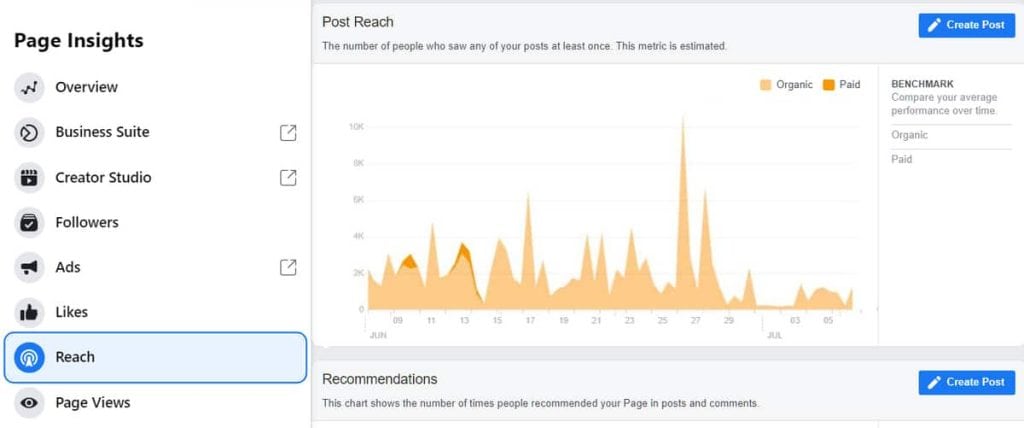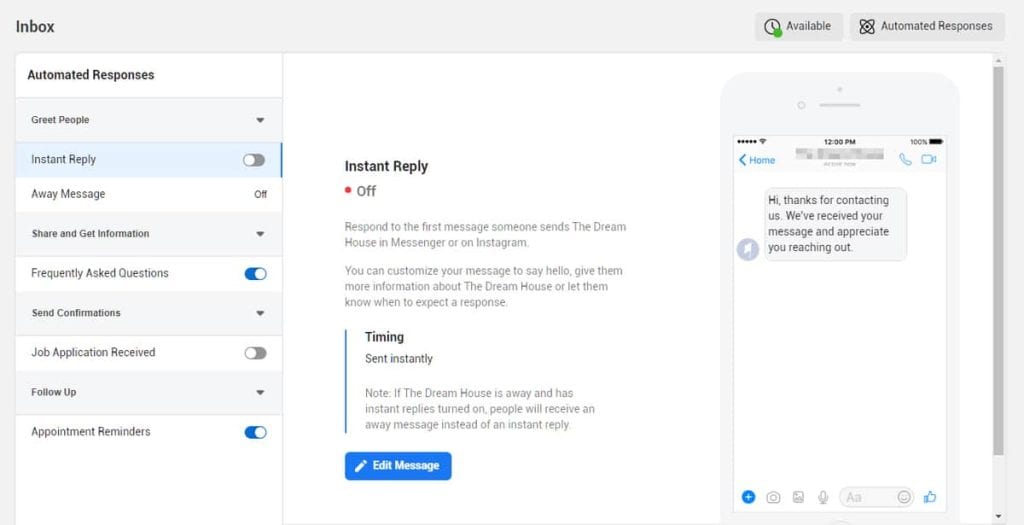The Social Media Manager position was recently established and its emergence is closely related to the spread of social media itself.
This profession is seen with increasing interest by both those who want to start a career in the area that companies are looking for this job. For this reason, in this Social Media Manager: the definitive guide, I will explain how the position of Social Media Manager was created and what is its importance for companies.
We’re going to see what are the specific tasks of the person who works in the social field and its skills. In addition, I’ll walk you through the first steps to take to start your career as a Social Media Manager and I’ll show you some of the useful tools for managing tasks.
Table of Contents
How was the figure of the Social Media Manager conceived?
Before looking at who and what the Social Media Manager is, let’s take a step back to understand what events have led to the development of this new career. Nowadays, social networks are an integral part of our daily lives, which is why we rarely stop to think about who manages them, limiting ourselves to using them as simple ‘visitors’.
However, you only have to think about the billions of users who regularly use social media to interact with other people’s content to understand that it was inevitable that social media would evolve. The capacity of social media to gather more people in one place, albeit virtual, was immediately seen as a great opportunity.

Such an opportunity could not go unnoticed by companies that have completely rethought their marketing strategies to adapt them to social networks. This is how social networks have quickly turned into a new showcase for corporate brands.
Needless to say, to adapt in turn to the needs of businesses, Social networks have developed special tools to allow companies to improve their promotion. With the advent of these new tools offered by Social networks, even the role of working professionals have evolved and this is how the role of the Social Media Manager was created.
Who is the Social Media Manager?
Now that we have outlined the reasons in this Social Media Manager: the definitive guide, let’s see why this new professional figure was created, let’s try to reconstruct a real identity-kit of the Social Media Manager, starting from who he/she is.
The profession of Social Media Manager includes several tasks. For this reason, professionals in this field must acquire a set of competencies that although ranging over several areas are still linked together by a common thread.
The Social Media Manager encompasses, therefore, such skills that more than one person would be attributable to the work of an entire team.
By definition, whoever deals with the management of Social Media on behalf of third parties must manage every aspect starting from the strategy, through the structuring of a calendar of publications, until you get to the promotional activities and analysis of the results obtained.
Social Media Manager vs Social Media Specialist
The position of Social Media Manager, falls, therefore, not only in the actual management of the editorial plan but often also all operational aspects and the implementation of strategies. This distinguishes the profession from that of the Social Media Specialist, who instead deals mostly with the implementation of strategies.
For example, if the Social Media Manager plans the calendar of content to be published on social networks, the Social Media Specialist is, instead, the one who deals with the drafting of this content (also called copy).
The two professions, therefore, overlap in some respects, and this also explains why they are often confused with each other.
Social Media Manager: what does he/she do?
In this Social Media Manager: the definitive guide we’ll take a look at the what exactly a Social Media manager does. The Social Media Manager has the task of dealing with all aspects of social media management on behalf of a company. The areas of interest of this profile include, in fact, all those strategies designed for social networks, including the sharing of content from the company’s website and blog.
However, the Social Media Manager is not also responsible for creating website content or writing blog posts. These tasks, in fact, belong to other positions, mirroring, but distinct from those who manage social.
This is because, for example, the Social Media Manager must also deal with the drafting of an editorial plan and a content calendar, just like the person who deals with the company blog.
However, we are talking about content that is completely different in terms of text length, type and communication style, what is often referred to as the tone of voice. For this reason, it is necessary that the two tasks are assigned to separate professionals, each with specific skills.

In order to then connect your site with your social profiles, you will need to add social icons on your business site. To learn more about this topic, I suggest you also read how to place social icons on your site and how to choose social sharing plugins for WordPress.
In addition to organizing the editorial plan, the Social Media Manager must also manage the communication on behalf of the company through the different channels. It is always up to him to promote content and products through paid advertisements and to manage the community.
Social Media Manager: salary
If you’re wondering how much a Social Media Manager makes, you’re in the right place. You should know, however, that there is no easy answer to this question.
The work of the Social Media Manager, as you will know or have begun to understand by reading this article, varies greatly. This is due to the fact that not all professionals who deal with social management on behalf of a company have the same tasks.
This is precisely why it is difficult to define the salary of a Social Media Manager. In recent years, the corporate budget dedicated to promotion through social has been gradually increasing.

For this reason, those who have embarked or are about to embark on a career of this kind can well hope to find new opportunities to earn online through this path. In any case, however, the real gain derived from his work will depend precisely on the budget made available by the company.
Precisely for this reason, a Social Media Manager who works for a more structured company will have better-earning prospects, compared to those who deal with small companies.
In any case, taking into account that the salary depends on several factors and could, therefore, also undergo strong variations, let’s see some numbers.
According to data collected by PayScale, the average salary in the United States is $51,170 per year. With a minimum of 35 thousand up to a maximum of 78 thousand dollars.
And what about Italy? Also in our country, the figure of this professional is making its way, although a little slower. In Italy, in fact, the average salary is 22,243 euros, significantly lower than the U.S. average.
Job as a Social Media Manager: what are the tasks specifically?
The duties of a Social Media Manager start from an accurate design of content to enhance the corporate image. The next step is, then, the drafting of a real long-term editorial plan. This will then be structured in the form of a calendar and updated periodically.

After the creation of the content, we move on to the actual sharing and, therefore, the sponsorship of the same. As the production of content proceeds on the various channels, the professional also takes care of analyzing the results obtained.
In the meantime, the Social Media Manager has also the task to take care of the community, always having an eye not only to the reactions of the users but also to the needs themselves expressed through the network.
Content Design
The first task of a Social Media Manager is to create or even better develop content. Even if he entrusts the actual realization to a third party, in fact, the conception of the same is up to him/her.
This content must have the ability to generate interest from users. For this reason, not only must they be useful, but they must also be able to arouse something in the audience. Only in this way will the company be able to stand out from its competitors.
The actual content production, as we have said, is in some cases up to other figures. Among these figures can be present, for example, a copywriter for the drafting of texts and a graphic designer for images and video editing. What is, then, the task of the Social Media Manager in this area?
It is up to the professional to understand how to develop the content and assess them, above all, their different impact on the audience. The Social Media Manager can, therefore, analyze the response of users to gradually correct the shot.
However, this data cannot be analyzed immediately and it will be necessary to have published a certain amount of content first. To begin, therefore, the professional can rely on the analysis of competitors and knowledge of neuromarketing that will allow him to better structure the content according to their types: text, images and video.
Editorial Plan Development
In this section of the Social Media Manager: the definitive guide, I’ll introduce the key elements to start with, you can also delve further into all phases of development with our content plan guide.
The Social Media Manager must carefully structure the schedule for sharing content. To do this, he or she will need to take care of drafting a proper editorial plan, just as is the case for blog or magazine content.
The editorial plan can be wide-ranging and cover, therefore, even a very long period of time, up to a year. This will serve to define the objectives that you want to achieve, but also the audience to which to address them.
Through it are usually defined macro topics and various themes. Moreover, in the drafting of the editorial plan the frequency of publication is also defined.
Creation of the editorial calendar
The next step in the Social Media Manager: the definitive guide is to develop the macro themes indicated in the editorial plan into a real calendar in which you will draft the topics specifically.
The calendar, in fact, unlike the editorial plan, must be specific and define, in addition to the topic, also the date on which each post will be published. This time, however, it will not be enough to insert only the reference topic, but you must also establish a title that will better define the post specifically.

In the calendar, it will also be necessary to insert the chosen social media platform and the type of post with a lot of multimedia content to be added. For this reason, we must also consider that each social media platform is suitable for different content.
Precisely for this reason, the choice of social media platform is not to be underestimated and each content should be optimized for the social media platform in which it will be inserted, rather than being shared indiscriminately on all.
Just think of Instagram that gives greater importance to images, penalizing the text, or Twitter that strongly limits the number of characters available per post.
Content promotion through social
An integral part of the Social Media Manager’s duties is managing the sponsorship of content via social networks. The professional who administers social media publication on behalf of a company is also tasked with advertising content, not just sharing it.
The world of advertising online and through social networks is so vast that we cannot here fully explain how it works. However, let’s look at some of the dynamics of advertising through social.
First of all, it should be pointed out that advertising through social networks requires the management of budgets that can also be high. In some cases, moreover, as it happens for the creation of content, it is not directly the Social Media Manager to deal with it.
There is, in fact, the figure of the Social Media Strategist to whom the task of implementing advertising campaigns can be delegated. In any case, whoever has to deal with the management of advertising campaigns must follow some specific steps, which I will explain later.
Analysis of statistics and results
Another important role of the Social Media Manager is to analyze the results in progress. The responsibility of promoting the company’s brand lies with the professional, and to understand what is going well and what needs to be improved, you must always start with analysis.
To analyze the statistics, it is, therefore, important that a significant amount of content has already been published for each social. Otherwise, with insufficient data, it will not be possible to have a correct overview.
The various social platforms provide internal Insights, as we will see in the dedicated section, and there are also many other tools that a Social Media Manager has available.
Community management
A task no less important, nor less demanding for the Social Media Manager, is just the management of the circle of users who follow the page, or the company social profile.
Here it is clear that the work of the professional is all-around and above all requires a daily commitment, not indifference.
First, the Social Media Manager must analyze the desires of users. To do this, the statistics we mentioned earlier will be very helpful, because they will allow the professional to understand what content is focused on the interest of the audience.

Whoever is dedicated to social media management must also take care of responding to comments and messages from the community. In this way, you can make sure that your firm is not just a shop window, but a one-way channel. Their very essence is based on communication and this must aim as much as possible to be bidirectional.
A self-respecting Social Media Manager, therefore, must respond to messages received and also to comments. As we will see later in this article, even in this case the professional has many tools available that allow him to make these operations easier.
The skills of a Social Media Manager
Now that we’ve seen what a Social Media Manager does in this Social Media Manager: the definitive guide, it’s natural to understand that, in order to carry out all these tasks, he must have specific skills.
As we have seen, in some cases, the professional takes care of the complete management of social media channels, although in more structured companies he/she is usually supported by other figures who collaborate actively.
In these cases, therefore, everyone will have specific tasks and there will be no overlapping of roles. However, from the point of view of skills, as we have already seen, these different figures have several points in common.
In all cases, the Social Media Manager will have to possess some essential skills and attitudes, let’s see what they are.
Organization and Availability
Solid organization skills are important, especially when you have to manage multiple tasks that are different from each other as in this case.
As we mentioned earlier, the Social Media Manager must devote many hours to his work in order to not only complete his tasks but also to be able to respond promptly to the community.
Excellent knowledge of social media
The main skill is definitely having knowledge of the social media that will need to be used, or even better, all of them.
However, this does not mean that using social every day will allow you to become a Social Media Manager. In fact, the knowledge I’m talking about refers to the tools made available by these platforms for their internal management, which vary from one social media platform to another.
In addition, there are also rules that vary from one social media platform to another and that you will need to know in order to propose content that is always relevant to the target platform. As far as images are concerned, it will be important to know to know the most suitable formats for each social media platform and to know that, for example, the size of photos for Instagram is specific and may vary from the optimal formats for other social networks.
Communication skills
Strong communication skills, combined with professional training, is an essential quality to form the figure of the professional who manages social media.
The ability to communicate will be important both in the relationship with users and in the creation of content, in case it is always the Social Media Manager to deal with it.
The professional will have to make his own communication method of the company and understand the tone of voice to be used to align with corporate guidelines. The experienced Social Media Manager will then be able to use his creativity combined with persuasive communication strategies such as storytelling.
Use of specific software and tools
Social Media Manager must know and take advantage of the tools at his disposal.
From graphic design programs to social network analysis tools, but also tools for SEO optimization. We’ll talk specifically about these various tools in the ‘Getting Started’ section of this guide. If, on the other hand, you want to delve deeper into the topic of SEO, I recommend reading how to perform an SEO analysis of your site and how to use header tags.
Experience
The skills of the Social Media Manager will initially be acquired through study and training. The Social Media Manager will need to have a basic understanding of marketing and promotion, as well as other soft skills.
In this case, it is important that the client has the opportunity to develop the skills required for the job.
The Social Media Manager, moreover, must always have an eye towards SEO optimization and also keep an eye on trends. In this way, he will be able to make the brand he deals with stand out from its competitors.
The development of these skills, however, can eventually be refined only through direct experience in the field.
Social Media Manager: how to get started
If you want to get ready to start a career as a Social Media Manager, in addition to knowing what roles belong to this figure and what skills it requires, you also need other tips.
For this reason, in this part of my guide, I decided to collect some tips that may be useful to you.
How to plan content

The content that you are going to design and, in some cases, create, is the core of your work. To do this, you’ll have to start with the type of company you’re dealing with and then leverage the brand, but above all, it will be essential to identify your target audience.
Identifying the audience of buyer personas, i.e. potential buyers, will also help you outline the type of content. It goes without saying that each target audience will be more accustomed to different types of content.
As I have already mentioned, in planning the content you will also have to take into account the type of social media on which it will be published. Also in this case the choice of the social media platform depends directly on the type of target you want to aim at.
How to Develop an Editorial Plan
What you’ll have to do is to set up a precise editorial plan, but don’t worry if it’s not perfect at the beginning, because you can always make changes in the process. Especially if you are going to manage a new social network, the research of the topics to focus on could be difficult in the first period.
For this reason, the development phase of the editorial plan provides a careful analysis before starting with the actual implementation of content. But what do you need to analyze?

First of all your competitors, do not copy from them, but try to understand what the competition offers and try to study a strategy to offer something better.
The analysis of the competition is the basis of any marketing strategy, but remember that the brand you represent can also be inspired by competitors, but it must be able to stand out from them.
Fortunately, to help the Social Media Manager, even in the analysis of competitors, there are several tools. For example, Facebook provides those who manage a page with specific tools and data, the Insights, which I will talk about later in a dedicated paragraph.
How to effectively promote content
After sharing content, an inevitable step is to promote it. As I mentioned when talking about the specific tasks of the Social Media Manager, social networks offer specific tools to implement the internal promotion.
Let’s take the case of Facebook as an example: the social network provides companies and those who administer a page in general, with an internal advertising system. This will allow you to create advertising campaigns directly from the social media platform itself.
You should know that social campaigns are different from classic ones and allow you to choose the target audience. If on the one hand this can be considered an advantage, it can also hide pitfalls.
Of course, I’ll tell you why right away: if you get the target audience wrong, your campaign will be an inevitable failure. Luckily, Facebook, thanks to its Ad Center, provides you with everything you need to analyze the progress of your paid advertising campaign and, if necessary, correct it in the process.
For more details on how to define your audience, continue reading in the specific paragraph on Facebook Insights below.
How to analyze statistics
An integral part of social media management is analyzing the data from the various socials. This step is crucial for improving your strategy and getting better and better results.
Luckily, social media platforms have internal analytics systems that help Social Media Managers gather key statistics. So, each social media platform has its own internal tool, but there are also additional external tools that are useful, among which we must undoubtedly mention Google Analytics.
Tool to analyze statistics: Facebook Insights
Among the different internal tools available, I will briefly talk about the one offered by Zuckerberg’s social network. In this way, you can get a clearer idea of the potential of these tools.
The tool provided by Facebook allows you to view the performance of the pages you own or manage. Thanks to Facebook Insights you can have a clear view not only of the number of users who view your page but of all their interactions.

You will be able to evaluate the coverage of your posts and therefore understand how many people have seen the content posted on the page overall. You will then be able to evaluate the trend of these metrics over time.
Moreover, by viewing in detail the data of coverage and interaction of individual posts, you will be able to understand which topics or types of posts attract more users.
Through Insights, you will also be able to compare at a glance the metrics of organic and paid posts and understand if your ads are working properly.

Through your page’s follower tab, you’ll be able to access the demographics of the users who interact with it.
Insights, in fact, directly categorize users by gender, age, and country of origin. This will be very useful for setting up and narrowing down your user base when doing paid ads.
Another interesting feature of the tool is that it gives you the possibility to analyze your competitors as well.
To do this you’ll just have to add the pages you want to keep under control to the list. This will allow you to take a look at the most popular posts of your main competitors and better understand how to optimize your content accordingly.
How to manage the community
As we said, taking care of followers is one of the tasks of the Social Media Manager. Community management starts from providing answers to users, both to private messages addressed to the page and to comments.
However, it is not limited to this, since the management also includes the actual follow up of ‘potential customers’. For this reason, Facebook provides some companies with the Contact Center: let’s find out more.
Tool for customer management: Facebook Contact Center
This is an internal service of the social network, which at the moment is made available only to those companies that use paid campaigns in order to generate contacts.
For the Social Media Manager, the Contact Center tool offered by Facebook will be useful to take care of customer management. This tool allows you to establish tags for each contact in order to classify customers into neutral, in progress, interested, converted, archived and deleted.
This will make it easier to identify the most promising clients from the set of all users. Contact Center is, therefore, a sort of CRM in its basic version, since it is still under development.
Just like CRM software, in fact, this tool also allows you to send targeted marketing emails directly through social. Speaking of email marketing, you might find it useful to delve into this topic by reading how to prevent your emails from ending up on a blacklist.
Moreover, Facebook also allows you to set up predetermined responses to be sent automatically to users who contact your page.

Auto-responses can be managed by all Page administrators, and therefore do not have the same limitations as the Contact Center. They do not replace the response from the Page administrator but serve to notify the user that they will receive a response as soon as possible.
It’s also possible to activate different responses in case the page is set to Absent, a function that can be useful in times when the Social Media Manager is unable to respond.
Conclusion
In this Social Media Manager: the definitive guide, I have told you about the role of Social Media Manager, we saw what generated the origin of this new role and the potential of this professional.
We have also seen how to start a career as a Social Media Manager, what skills to develop in order to work in the field and what steps to take to set up your strategy. In the second part of the article, I showed you some of the tools that make the life of a Social Media Manager more organized and, at least a little, easier.
If there is something that is still not clear to you or something you would like to know more about, write your opinion here in the comments below.



Leave a Reply